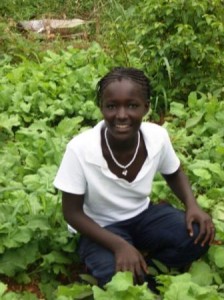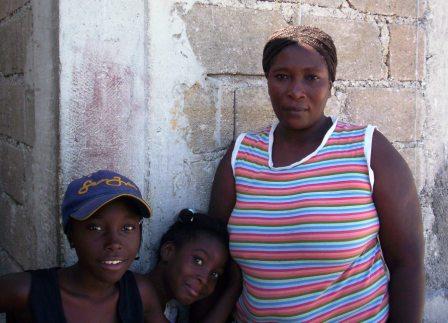Wonn Refleksyon depends on three elements.
That it depends on participants goes without saying. It needs a group of people willing to try to be at least reasonably good to one another.
It also depends on a discussion leader, someone who wants to lead by listening first, speaking second. Someone who strives to nurture the discussion’s shape, but who also enters into it with curiosity and openness.
The third element is the text. It needs to do two things. The first, the most urgent, the most obvious, is that it must interest those who are asked to read and discuss it. It must invite them to share their thoughts, their experiences, and their questions. Wonn Refleksyon aims, in the first place, to help people accustom themselves to sharing their own thoughts and to listening to others’. It needs to make it easy for someone to speak up, and the most important tool it has is a text that engages.
The second thing a text must do it support participants as their inquiry deepens. The goal Wonn Refleksyon sets for itself goes beyond just creating occasions for people to express their thoughts, beyond nurturing the habit of listening. Expressing one’s thoughts and listening to others both aim at a further goal: learning to learn together.
It’s impressive enough to watch a group whose participants have learned to share the time they spend together. It’s so common in most groups we work with for one or two members to dominate, for them to interrupt each other, for several to talk at once.
But the fact that participants take turns speaking doesn’t mean that they’re really listening to one other, much less learning from one another.
A well-chosen text can help. It can introduce complexities into a conversation, puzzles that give those talking about it something to chew on. It would, of course, be possible for a group of people to jump directly into questioning one another about the thoughts and experiences that they decide to share, but it can be hard to decide to do so.
But what do you do when you’re working with a group of people who cannot read? We thought we had found a good answer when we created a book in which discussable images alternate with Haitian proverbs. The proverbs engage Haitians, especially rural Haitian adults, quickly. They are so present in Haitians’ everyday speech. And the images do what the proverbs can’t: They provide perplexing details that participants can ask one another about, that invite them to try to search for answers together.
The problem is that we have not yet found a way to mass-produce that book. All the copies that we have so far were made by hand. Two women, Donna Struck and Tina Shirmer, used a first-rate photocopy machine at Dynapace Corporation, Donna’s company, to produce them one-by-one. They’ve sent us a couple hundred of the books, but as generous as they’ve been with their time and money, it cannot solve the problem over the long-term. We need a way to reproduce the books in Haiti and the funds to do it with. We will be working on the problem in the months to come.
But in the meantime, we need to be able to continue to work with non-readers. The literacy rate in Haiti is low, about 53% according to a CIA website. I don’t know how to estimate the percentage of non-readers among those we aim to work with and among who would be interested in working with us, but it’s certainly much higher. So we need to have a good approach to offer them.
And that’s why I find myself on Lagonav this week. I’m participating in a workshop for literacy teachers who work for AAPLAG, the Association of Activists and Peasants of Lagonav. These literacy teachers, most of whom are new to the field, have been working four days each week with new literacy learners since late August, and they came to AAPLAG’s center in Nanjozen for two days of meetings and further training. In January, AAPLAG’s leadership wants them to begin holding Wonn Refleksyon discussions with their students, and they asked me to figure out an approach I could teach them to use.
As much as I would like to offer them the book of proverbs and images, it’s not available. And that’s where driving the dog away comes in. One popular Haitian proverb is “//Se ak baton nan men ou, ou pouse chen//.” That means, “It’s with the stick you have that you drive the dog away.” It’s like saying that you play the hand you’re dealt. You can only use a tool that you have. We don’t have the book, and we’ve found no other way to introduce large quantities of appropriate images.
But proverbs are everywhere in Haiti, so I decided to see whether groups that use nothing but Haitian proverbs could flourish. With help from some friends, I assembled a short list of proverbs. There are thousands of them, but I settled for 22. I organized them according to increasing length and complexity of language. The first is “Fè koupe fè,” which means “iron cuts iron.” The last is “Se lè koulèv mouri, ou wè longè l,” which means “it’s when the snake’s dies that you see its length.” I imagined that such an order would mean that they could do double-duty as texts for Wonn Refleksyon and reading lessons as well. The teachers will write a proverb on the blackboard and help participants decipher it. She or he will then lead the group through a Wonn Refleksyon activity based on the proverb.
The workshop itself seemed promising. The literacy teachers took to talking about the proverbs right away, even though they themselves reported that they were surprised that they had as much to say as they in fact did. Not only that, but one of them led a sample class for a group of literacy learners while the rest of us observed. It went swimmingly. The women in the class – it was, in fact, all women – spoke fluidly and revealingly about the proverb.
The one we had chosen for the experiment was “Dèyè mòn gen mòn,” or “beyond mountains there are mountains.” It brought out detailed descriptions from two of the women about how they had been struggling to raise their children once they had been abandoned be men who immigrated to the States. Other women had other experiences to share. We were all excited about the results.
On the other hand, there was very little sign that the women wanted to move from simply sharing experiences to questioning one another and, so, learning together. And I don’t have much hope that they will take this next step this year. The proverbs don’t really support it, and the short time I spent with the literacy teachers wasn’t enough to help them see how to encourage it.
But that might not be so bad. Haitians also say “Tipa tipa zwazo fè nich.” That means “step by step the bird makes its nest.” We should probably be willing to take one step at a time.

